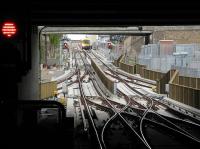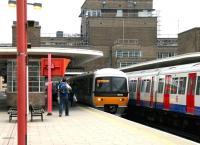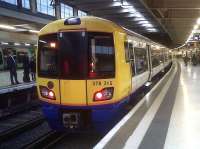In the loop [Economist]
Date: 03/10/2013
WHEN Transport for London (TfL), the authority behind the city’s roads and Tube network, took over what is now known as the London Overground in 2007 it was in a sorry state. The route, which incorporated several rail lines, was overcrowded, with neglected stations and rickety trains. How the line was transformed illustrates some of the ways that infrastructure projects can alter a city.
External links
In the loop
Economist
How one railway line helped change the way Londoners commute
Related images
View south from the new Dalston Junction station on 9 May 2010 along what was once the route to Broad Street. This was the first day of full service on what is now the new East London Line extension. The station has four platforms, the inner two terminate at buffer stops, while the outer two veer west to eventually join the North London Line at Western Junction [see image 5172].
Location: Dalston Junction
Company: North London Railway
10/05/2010 John Thorn
Location: Dalston Junction
Company: North London Railway
10/05/2010 John Thorn
One of the Chiltern 165 DMUs arrives at Harrow-on-the-Hill on 23 July 2005. Alongside is a Metropolitan line train for Baker Street. The 165 is forming a Saturday morning service from Aylesbury to Marylebone and will run non-stop from here into the London terminus in 17 minutes.
Location: Harrow-on-the-Hill
Company: Kingsbury and Harrow Railway (Metropolitan Railway and Metropolitan and St John^s Wood Railway Joint)
23/07/2005 John Furnevel
Location: Harrow-on-the-Hill
Company: Kingsbury and Harrow Railway (Metropolitan Railway and Metropolitan and St John^s Wood Railway Joint)
23/07/2005 John Furnevel
A new face at Euston - 378215 preparing to set off for Watford Junction on an Overground service. The chap on the left seems impressed, even if his mate would rather phone a friend...
Location: London Euston
Company: London and Birmingham Railway
10/06/2011 Ken Strachan
Location: London Euston
Company: London and Birmingham Railway
10/06/2011 Ken Strachan





